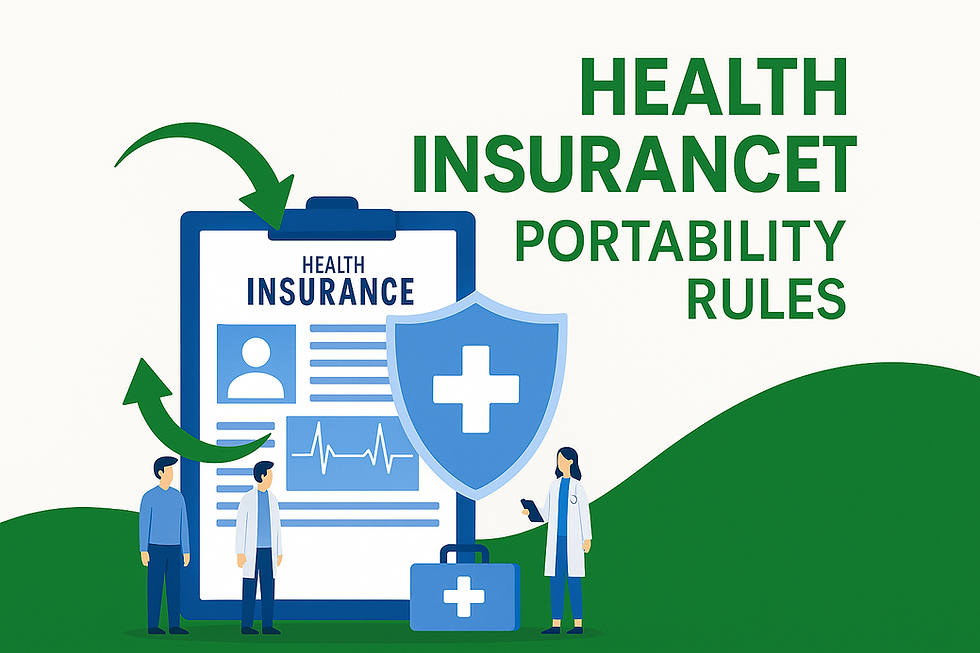Top 5 Myths About Health Insurance Debunked
- Health Insurance Info
- Feb 25
- 3 min read
Understanding health insurance can often feel overwhelming, especially with the mix of facts and misinformation swirling around us. Many misconceptions can lead to poor decisions that affect health coverage, expenses, and overall well-being. This article aims to debunk the top five myths about health insurance, providing clarity to help you make informed choices.
Myth 1: Health Insurance is Only for the Seriously Ill
Many people think that only those with existing health conditions need health insurance. This myth is far from the reality of health coverage.
Health insurance serves as a safety net for everyone, guarding against unexpected medical expenses. It also supports routine check-ups and preventive care, essential for long-term health. For instance, studies show that individuals with health insurance are 37% more likely to receive timely preventive care such as vaccinations and screenings.
Imagine the costs—without insurance, a simple emergency room visit could easily reach $1,200, while insurance could reduce that to just a $100 copay. Unexpected health issues can arise at any time, and having insurance ensures you remain financially protected.

Myth 2: All Health Insurance Plans Are the Same
Another common myth is the belief that all health insurance plans offer the same coverage and benefits. This is simply not true.
Health insurance plans can vary greatly in what they offer. Differences exist in terms of the network of providers, types of covered services, monthly premiums, deductibles, and out-of-pocket maximums. For example, a PPO (Preferred Provider Organization) plan typically provides more flexibility in choosing healthcare providers compared to an HMO (Health Maintenance Organization) plan, which requires referrals to see specialists.
Additionally, comprehensive plans often include benefits like dental and vision coverage, access to mental health services, and wellness programs not found in every plan. Comparing different options and carefully reviewing details is key to selecting a plan that aligns with your personal or family health needs.
Myth 3: I Can Wait Until I’m Sick to Get Insurance
Some believe they can wait until they feel ill to buy health insurance. This misconception can lead to significant financial risks.
In many regions, there are specific open enrollment periods when individuals can sign up for health insurance. Outside these times, obtaining coverage can be challenging and may require proof of qualifying events like job loss or relocation. Furthermore, waiting could mean higher costs, as many plans impose waiting periods for pre-existing conditions.
Consider the fact that 65% of bankruptcies in the U.S. are related to medical costs. By investing in health insurance now, you can prepare for not only unexpected emergencies but also future planned procedures like surgeries or long-term treatments.
Myth 4: Health Insurance is Too Expensive
The belief that health insurance is unaffordable can discourage many from seeking coverage. Yet, numerous financial assistance programs can help ease the burden.
In various regions, subsidies are available for low-income individuals and families to help cover insurance costs. Many plans also offer flexible options, allowing individuals to adjust their premium and deductible to suit their budget. For example, over 90% of people enrolled in the Affordable Care Act (ACA) marketplace receive some form of financial assistance, which drastically lowers their premium costs.
While upfront monthly premiums might seem daunting, health insurance can prevent exorbitant out-of-pocket expenses in emergencies. For reference, the average cost of an ambulance ride can be $1,200—a cost that could easily exceed an entire month’s worth of insurance premiums.
Myth 5: Preventive Care is Not Covered by Health Insurance
A significant misconception persists that preventive care screenings and vaccinations aren't covered by health insurance. This false belief keeps many from seeking timely care.
In fact, most health insurance plans are required to cover preventive services with no out-of-pocket cost to the insured. Services such as annual check-ups, mammograms, and immunizations are typically included. The statistics are striking: early detection through preventive screenings can lead to a 90% survival rate for certain cancers when caught early.
Using these preventive services not only supports personal health but also contributes to overall community health by managing potential outbreaks and chronic diseases.

Wrapping Up the Myths
Navigating health insurance can be challenging, but clearing up these common myths can empower you to make better decisions. Recognizing that health insurance is vital for everyone, understanding the variety of plans available, and knowing what benefits come with coverage enables you to prepare effectively for your health needs.
By prioritizing health coverage and making informed decisions, you can safeguard yourself for the unexpected while maximizing access to preventive and routine healthcare services. Remember, it’s important to assess your options regardless of your current health status. Your well-being matters now and in the future.










Comments